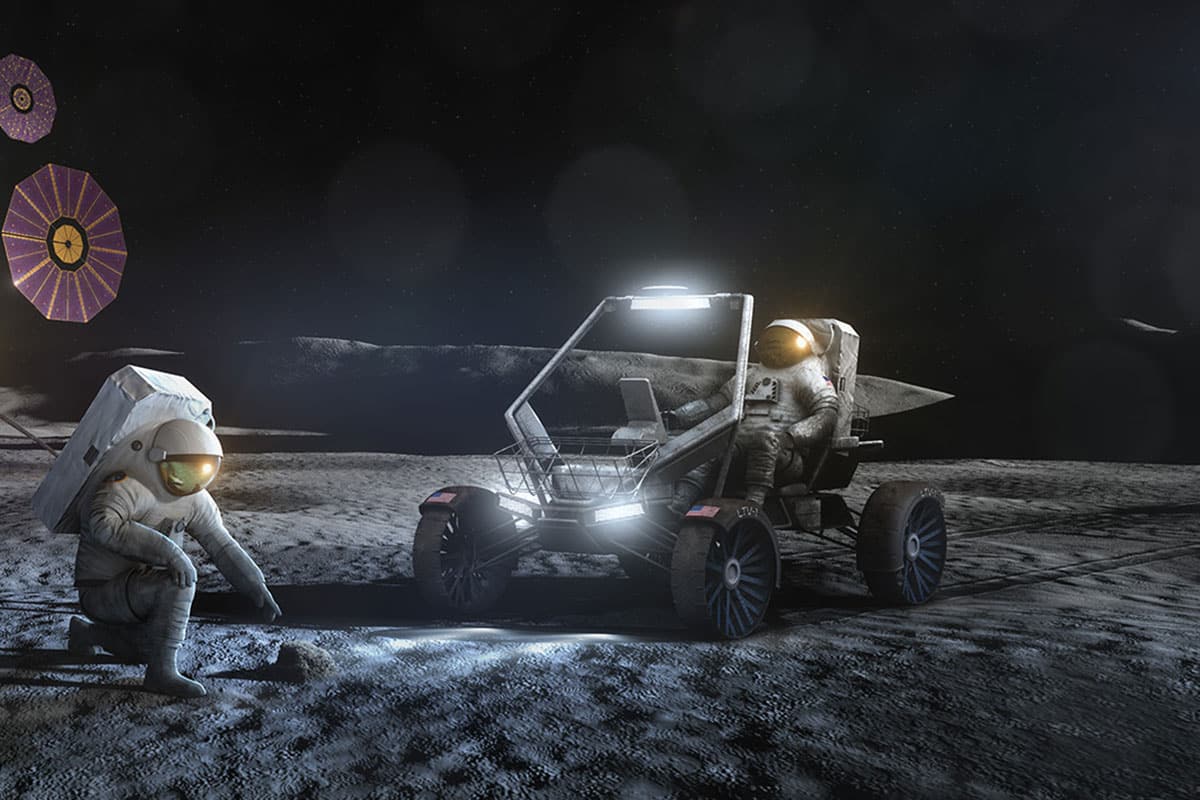
With the Artemis mission, NASA will land the first woman and first person of color on the Moon, using innovative technologies to explore more of the lunar surface than ever before. For the follow-up program to Apollo, NASA launched an initiative to develop and manufacture the next generation of Moon vehicles.
Thanks to a new Lunar Terrain Vehicle (LTV), astronauts will be able to go farther and conduct more science than ever before as they explore the South Pole region of the Moon during Artemis missions. The design initiative will provide the Artemis Program with the spiritual successor to the Apollo Lunar Roving Vehicle.
Instead of owning the vehicle, NASA plans to contract it as a service from the industry. The LTV contract will be an open competition available to a wide array of small and large aerospace contractors. The draft request for proposals for the LTV Services (LTVS) contract is now ready for the industry to review. The draft outlines NASA’s expectation for the use of the LTV on the lunar surface in the 2028 timeframe. After taking industry feedback into account, NASA plans to issue a final request for proposals by early 2023.
“This draft is one of the first important steps in this exciting project that will allow astronauts to explore farther on the Moon than ever before,” says Lara Kearney, manager of the Extravehicular Activity (EVA) and Human Surface Mobility (HSM) Program at NASA’s Johnson Space Center in Houston. “Gaining industry feedback is crucial as we move forward in issuing a final request for proposal.”
This iconic style of the unpressurized, human-class rover which debuted during the Apollo missions, is a cornerstone in NASA’s plans to develop a long-term presence on the lunar surface. While those human-driven vehicles expanded lunar exploration capabilities significantly, the new Artemis LTV will feature multiple upgrades and advanced technology.
Because Artemis missions will be targeting the lunar South Pole area, the new Lunar Terrain Vehicle must be able to withstand and operate in cold and unique lighting conditions. The vehicle is also expected to be able to cover a range of hundreds of miles per year, enabling access to diverse locations that will facilitate scientific discoveries, resource prospecting, and exploration. It will also be capable of remote operation and will be available for other commercial uses when not carrying out NASA research and operations.
NASA makes progress with new Lunar Terrain Vehicle moon rover project
Source: Tambay News

0 Comments